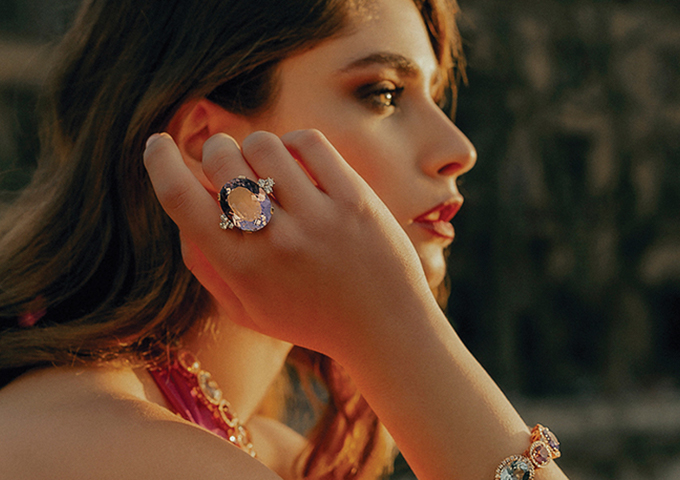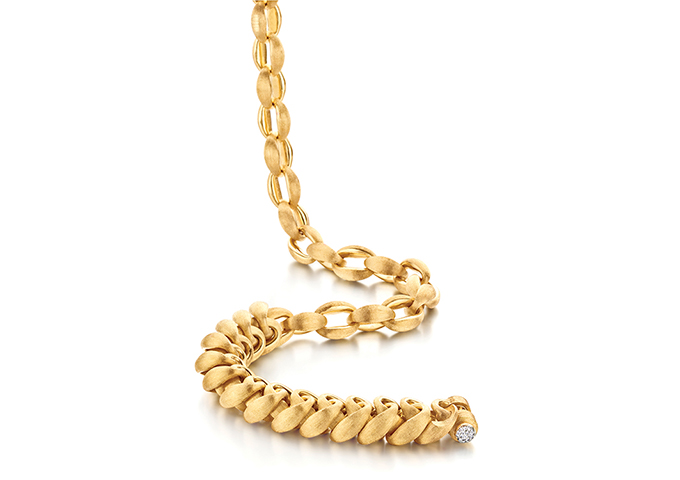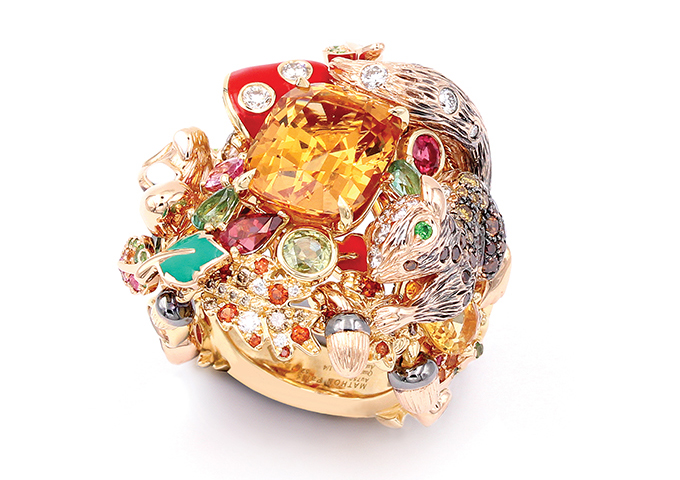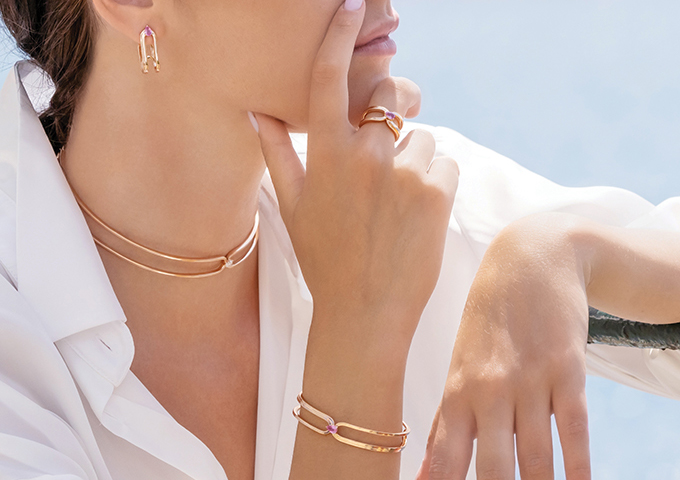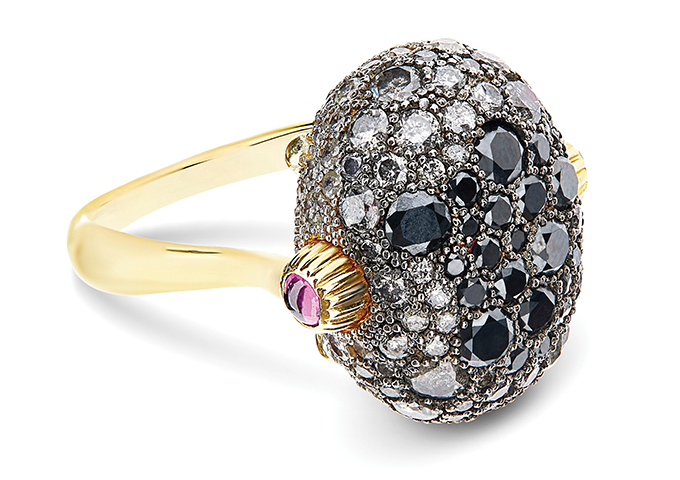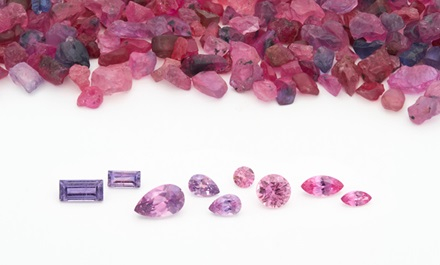Italian and French brands share an upbeat outlook on the jewellery sector, buoyed by sustained demand for premium-quality European-made jewellery.
This article first appeared in the JNA July/ August 2022 issue.
The jewellery industry swiftly adapted to the new normal in the face of Covid restrictions, thanks to its pliable nature. In Europe – home to some of the world’s most influential luxury houses – jewellers are counting on their inherent artistry and commitment to quality to sustain the business. JNA touches base with several French and Italian jewellery companies who talked about lessons learned during the pandemic and their prospects for the future.
New directions
Massimiliano Brustia, CEO of online jewellery marketplace Doralia, said the challenges brought about by Covid-19 had essentially altered many facets of the jewellery industry, including product positioning and consumers’ purchasing habits, to name a few.
“Online luxury shopping is not the future; it is the present,” noted Brustia, adding that even the most traditionalist of jewellery manufacturers had to adapt to this new and disruptive way of doing business. Doralia benefited from digital initiatives such as social media campaigns on platinum jewellery for men, engagement rings and themed jewellery, among others.
Jewellery brands and manufacturers faced several challenges during the so-called digital revolution, including some companies’ unwillingness to post or share their designs online and their reluctance to shift to new sales methods. Some consumers meanwhile were not too accepting of buying luxury jewellery online.
Massimo Gismondi, CEO of Italian jeweller Gismondi 1754, meanwhile underscored the importance of keeping in contact with clients and getting a glimpse of their life experiences and desires through online interactions.
This endeavour has resulted in increased sales of unique jewellery pieces and a deeper connection with customers, according to Massimo.
The need to sustain communications and build relationships became clearer at the height of Covid-19. Piero Marangon, CEO of Italian jeweller Nanis, said the world is coming out of the pandemic – a very challenging period – with renewed sensitivity to the concept of community. People are constantly looking for a more human dimension to the way decisions are made or business is conducted.
“After this crisis, we no longer merely desire to buy jewellery. It is something that we need to do because jewellery symbolises an experience or a memory,” noted
Marangon. “While jewellery has always had this connotation, its symbolism became crystal-clear to us during the pandemic.”
Caroline Gaspard, CEO of French jeweller Akillis, also attested to the resilient nature of the jewellery business, which she described as one of the most dynamic luxury sectors. “The jewellery industry has been growing extensively, with the market moving from unbranded to branded jewellery. Demand is strong and there is opportunity for brands like Akillis to grow even more,” shared Gaspard.
Global views
According to Brustia of Doralia, the international jewellery sector is expected to perform strongly amid ongoing macroeconomic and geopolitical challenges, specifically Russia’s prolonged war in Ukraine and high inflation rates.
Inflation in the US – one of the biggest jewellery markets globally – rose to a 40-year high of 8.6 per cent in May. In an interview with American Broadcasting Co in June, US Secretary of the Treasury Janet Yellen said “unacceptably high” prices are likely to stick with consumers throughout 2022 and that the US economy is likely to slow down.
“We have had high inflation so far this year, and that locks in higher inflation for the rest of the year,” Yellen was quoted as saying.
But prospects appear brighter for Italian jewellers. Global buyers expressed interest in Italy-made jewellery for its quality and innovative designs at this year's JCK Las Vegas fair, revealed Brustia.
Italy exports 87.6 per cent of its locally produced jewellery to major markets globally. Brustia expects the US, in particular, to drive growth in Italy’s jewellery manufacturing business if innovative jewellery production becomes more sustainable, efficient and digitalised.
Marangon of Nanis is likewise optimistic about the continued success of Italian jewellery manufacturers. Major brands have contributed to the so-called “brandisation” phenomenon, paving the way for Italian handmade jewellery to gain more traction in overseas markets, he remarked.
Branding lends credence to a jewellery company as a reliable source of top-quality goods and services. Aude Mathon, CEO of French jeweller Mathon, said creating a certification label like “Joaillerie de France” alongside a hallmark has proven its value for the company over time.
This functions as a stamp of excellence to guarantee that an intricately designed and well-crafted jewellery piece can be enjoyed by many generations. She noted, “Consumers today still love the idea of passing down a beloved jewellery piece to future generations. But their preferences have changed. They have become partial to artisanal products made with a heart.”
To meet modern buyers’ evolving needs, Aude said she is planning to invest in innovation, as well as educating and training young people on jewellery-making techniques such as lacquering, crimping, polishing and engraving, to name a few. Digitilisation is also crucial.
“Our American partner, Gerard Riveron, had the intuition to go ‘phygital’ as early as five years ago. His e-boutique represents only small French brands. He organises functions where guests can view and experience the jewellery. Sales eventually happen online. His long experience with trunk shows inspired him to try this approach,” shared Aude.
Prospects in Asia
Some European jewellers are looking to Asia to spur growth in the jewellery sector. According to Maria Carola Picchiotti, marketing manager at Italian jeweller Picchiotti, the industry expects Covid-challenged Asian markets to improve by mid-October this year.
Marangon of Nanis meanwhile said entering the Chinese market could present a few challenges for some European jewellers – from meeting the demand of Chinese consumers to getting noticed and trusted as a smaller, niche brand. On the other hand, Nanis has had a robust relationship with the Japanese market for decades, added Marangon.
The Asian market has also undergone tremendous changes over the years, Aude of Mathon revealed. These include the emergence of social media platforms and influencers as well as digital marketing. “We are working on an e-boutique integrated into our website, which will open by the end of the year. Customisation, personalisation and a tailor-made shopping experience should give Asia and other markets the full Mathon experience,” noted Aude.
Gaspard of Akillis revealed that her company is likewise eyeing growth prospects in Asia while aiming to strengthen its presence in the European, Middle Eastern and US markets.
Doralia’s Brustia, for his part, acknowledged that product quality and reputation have become important considerations for the Asian consumer. As such, opportunities for European jewellers, known in the trade for their exquisite craftsmanship and creativity, abound in the Asian market.




